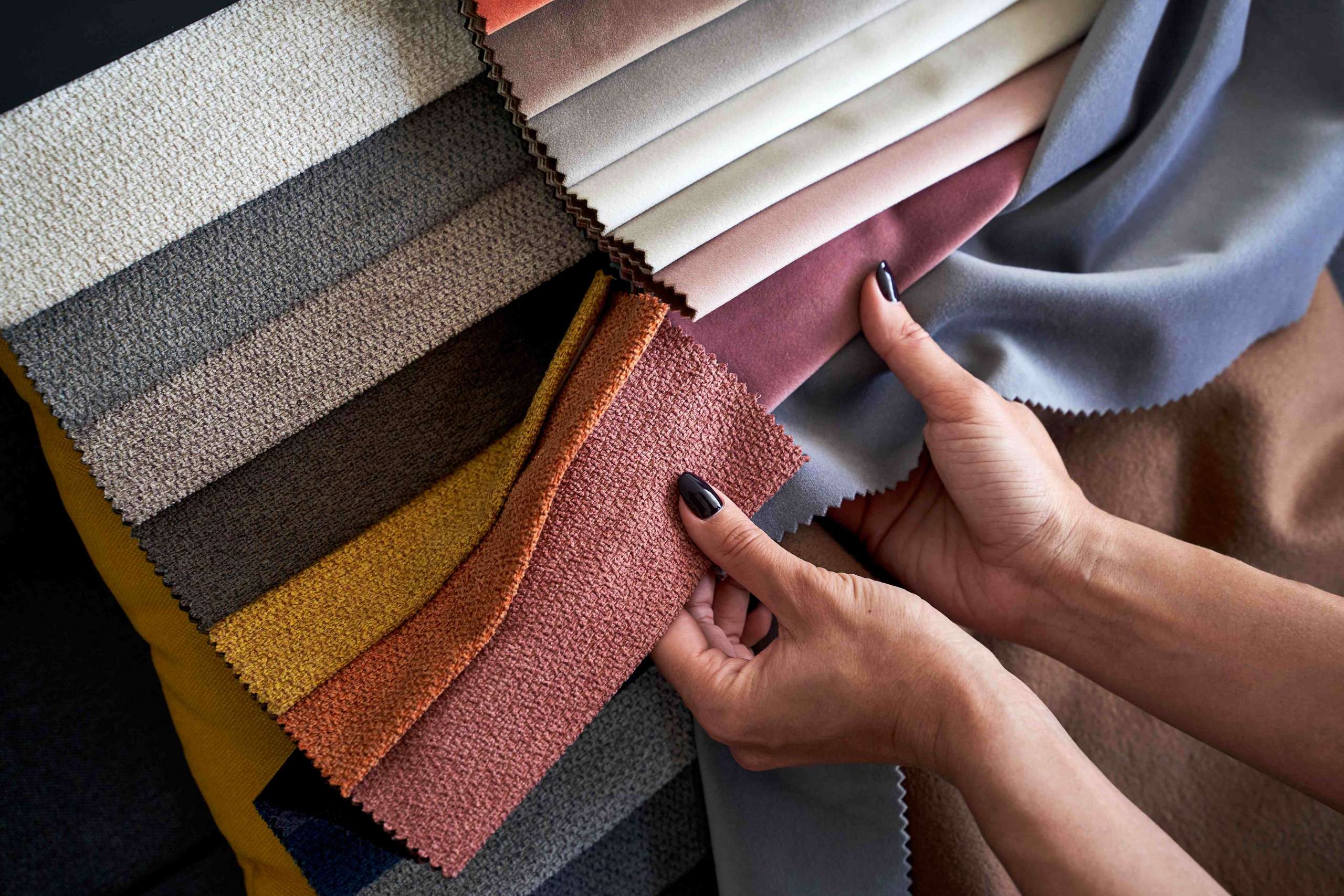Everything to Know About Yardage in the Textile Industry



Introduction
Once a fashion designer starts creating the designs, the importance is not only in creating great designs on paper. The main recognition of a designer comes when people wear the clothes designed by them. And to do that, one needs to sew those dresses.
One common problem that most fashion designers face is finding the right fabric yardage for their chosen material. The length and breadth of the piece of fabric that will be cut into various pieces and sewn together to make that dress is the most important component of the entire process.
https://www.pexels.com/photo/woman-in-blue-dress-using-a-ruler-6665030/
How to find the right measurement for your dress
Everyone knows that one yard is equivalent to 36 inches, and ideally, that is the width of the textile. Hence while selecting the length, if the designer knows that she/he needs 5 metres of cloth, they should also check the width of the material. Normally the fabric yardage will be 36 inches in width; however, textiles are available in fabric yardage between 33-44 inches.
Hence, if 5 metres of material with one-yard width was perfect for your dress, what happens if the fabric yardage is 33 inches? Of course, there will be a shortage of the material, and the designer might have to shorten the length of the dress or cut short the sleeves to make up for the same. The designer might even think about putting a lace border to cover up the shortage in the length of the dress. However, these are all make-shift changes that wouldn’t have happened in the first place if uniform fabric yardage was manufactured and sold by every company.
If fabric yardage is 44 inches, then there will be excess cloth left. The designer might think of making a scarf, a handkerchief, or even a matching mask with it. Again, these might be some of the resourceful ways of minimising wastage, which was not a part of the plan in the first place.
Different types of sewing projects need different types of fabric yardage
One must be wondering why these different types of fabric yardages came into existence. Well, as everyone knows, necessity is the mother of invention; it was exactly the same reason. People needed different widths of clothes for different types of items.
For example, if someone is stitching a duvet cover, quilt cover, table cloth, or sofa cover, they will need a fabric with more width. Else, they will have to stitch two pieces together, which will not look good once the cover is spread on the table or used as a duvet cover.
However, for sewing a dress, bag, tea table cover, etc., fabric with lesser width will be perfect. Again, the width of the material varies when it comes to curtains. It is normally more than 40 inches wide in order to fit into the standard size windows perfectly; the curtain needs to have that much width for sure.
Hence, it is clear that depending on the type of item the designer will stitch, they need to choose the right fabric yardage.
https://unsplash.com/photos/r5xHI_H44aM
Type of fabric and decision about fabric yardage
One more important thing that the designer needs to remember before buying the fabric is what kind of fabric he/she is buying, whether the fabric is pre-washed or will shrink after washing, etc.
It is always advisable to account for a little shrinkage surplus while calculating fabric yardage. It is also a good idea to wash the fabric properly before starting with the sewing project. This will ensure that any shrinkage that might happen will not impact the size of the dress. If it is a tailor-made dress, the fitting is very important. The client is paying extra only to get a dress which will fit them perfectly. Otherwise, it is much easier and cheaper to get a ready-made dress or shirt online.
https://unsplash.com/photos/0tBvf_HJ34c
Calculating fabric yardage for a dress, shirt, or other clothing items
It is very important for any fashion designer to know this-
1 yard = 3 feet = 36 inches
1 metre = 1.0936 yards
Different countries use different measurement units for measuring the length and breadth of textile fabrics. If you are using the metric system in your country, you need not worry about fabric yardage.
However, if you need to use it in fabric yardage, then convert all the measurements into inches and then in yards. Let’s look at this example. The measurements are made in inches, and one needs to add them up to see how many inches are needed. And then, the yardage can be calculated.
Lengthwise, the designer will need 44 inches for the front and back panels. The requirement for the sleeves will be 26 inches. One needs to add a seam margin of 3 inches. A total of 73 inches in length will be needed for this kurta for women.
Now, the bust measurement for the kurta is 48 inches in width. After adding 5% fabric wastage, the final calculation will be -
= (73 x 1.05 inches) = 76.65 inches.
If one converts this fabric length into yards, it will be = (76.65 /36) Yards = 2.129 Yards.
Hence, the fabric yardage for this Kurta is 2.129 yards.
Working with designers globally
If a designer has joined a global brand like Dior, Calvin Klein, Louis Philippe, etc., they need to be familiar with the metric system as well as the fabric yardage system.
The old system of fabric yardage is used in the USA, Libya, and Myanmar. Hence, if a designer has teams in these locations, they need to produce the designs in both systems. The rest of the world uses the metric system. Hence, if the designer is working with colleagues from any other parts of the world except these three, they will not face much of a problem. One yard equals 0.9144 metres or 91 centimetres.
Across the globe, a fabric is sold from a bolt, which is a cardboard tube around which the fabric is wrapped around. When the fabric is unfurled and spread on a flat surface, the length is measured the normal way. The width can be recognized by the selvage or the woven edge, which will be a little thicker and harder than the rest of the fabric.
https://pixabay.com/photos/fabric-cloth-fashion-textile-1237805/
Buying cloth from online portals
If the designer is not buying cloth from a brick and mortar store and instead depends on online purchases, she/he needs to be very careful. Most countries have a very limited return policy for loose fabric. Since the fabric was cut as per the customer’s need, it will be difficult to sell it to some other customer. Hence, most e-tailers do not take back cut fabrics unless there is a manufacturing defect in them.
If the designer is in the U.S., they can check the Amazon site, and clearly, the fabric yardage is mentioned there. The same goes for most of the other reputed e-tailers in the U.S.
https://www.amazon.com/Fabric-Yardage/s?k=Fabric+Yardage
Some online portals have their in-built drapery yardage calculator, upholstery charts for yardage estimations, yardage calculators for tablecloths, etc. Suppose someone is new to the field of fashion designing and has just started sewing clothes. In that case, it is better to use these fabric yardage calculators until they are comfortable with various measurements.
https://unsplash.com/photos/SpVHcbuKi6E
Many of these fabrics can be shipped from the U.S. to India, and if the designer is picking up such a fabric, they need to be extremely careful. Since overseas shipping is expensive, returning the item might not be possible.
Fabrics like tulle, taffeta, etc. are more popular in the U.S.A, and many designers prefer to buy them from the Amazon U.S. portal. Since these materials are extensively used for sewing expensive evening gowns for the affluent class, the designer needs to be extremely cautious. Buying lesser cloth for the dress they had promised to create for the celebrity will cost them their reputation and their entire business.
Top Hollywood A-listers always get their dresses done by reputed designers like Manish Malhotra, Rina Dhaka, Ritu Kumar, and the like. However, rising TV personalities might depend on recently pass-out designers with a good portfolio. If a designer has bagged such a contract, they should be extra cautious about delivering those dresses on time as per the diva’s request. If she likes the work of the designer, she will recommend her friends to try the new designer, and their business will increase by leaps and bounds. However, any goof-up in measuring fabric yardage and the dress not coming around as expected will ruin the entire career of the budding fashion designer.
https://unsplash.com/photos/X-olTuZZhVs
Conclusion
Fashinza connects you with manufacturers within the textile and garment manufacturing industry. We manage every stage from design to delivery. Start with a minimum order quantity of 50 pieces per design. You may choose to experiment with multiple categories. You can even order materials with different types of fabric yardage. Maximise your profit with the best prices in the industry. Happy designing!!



















